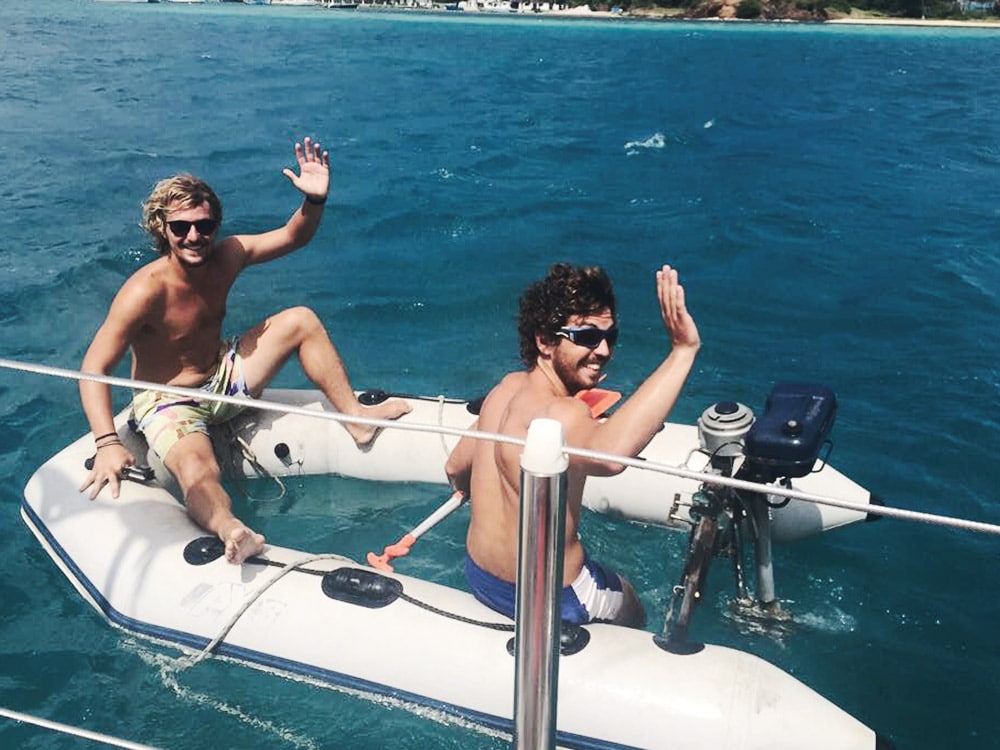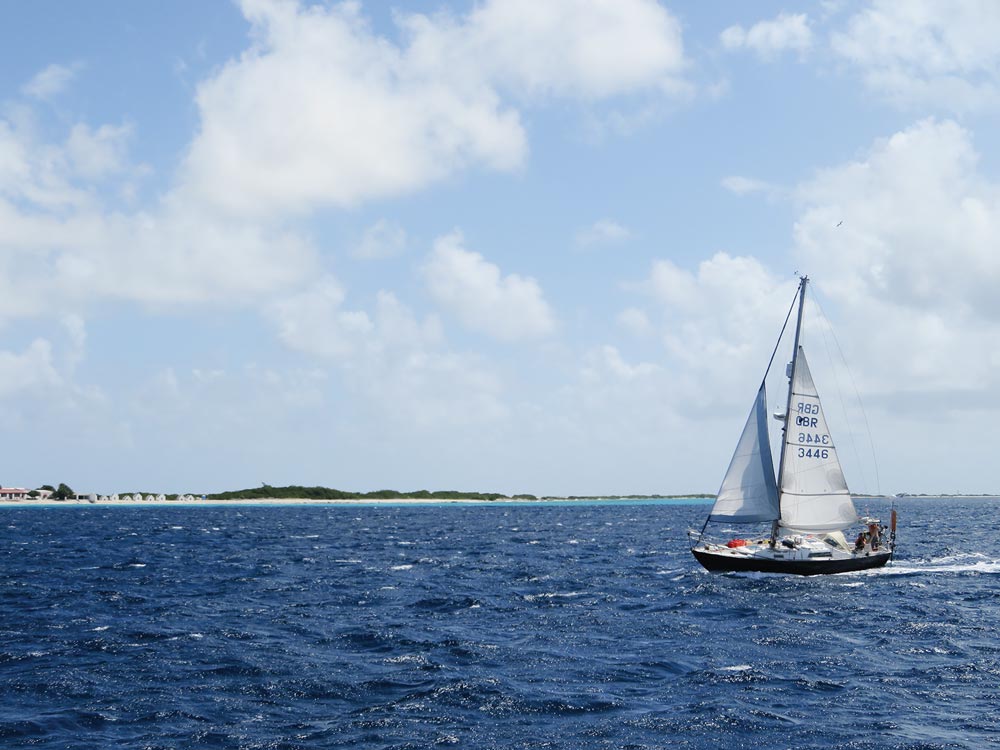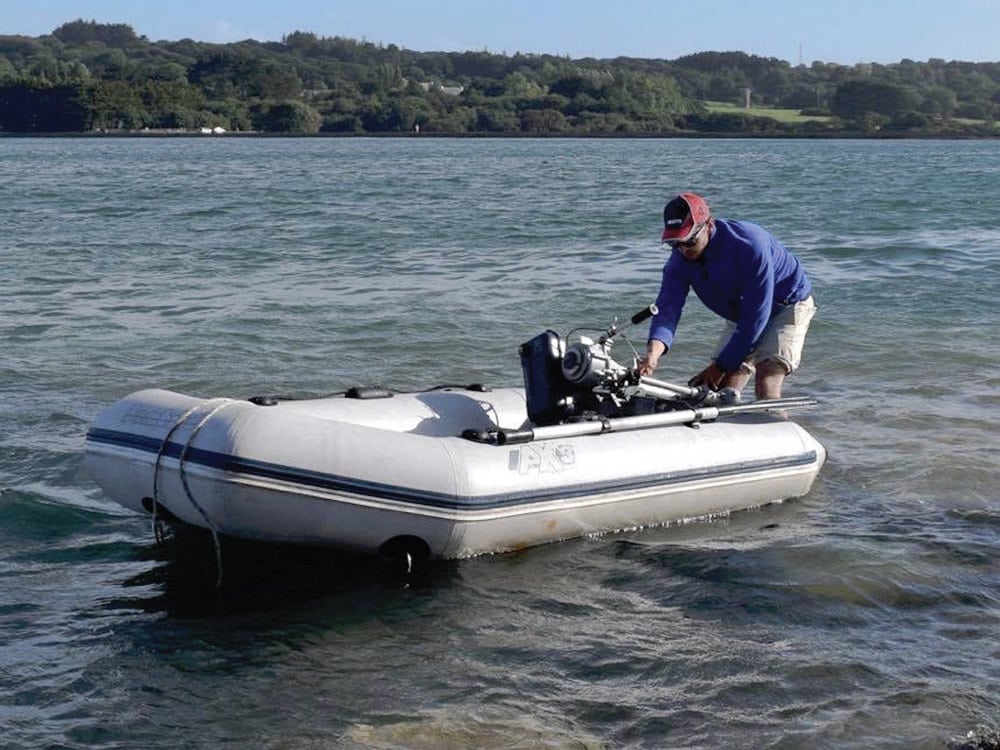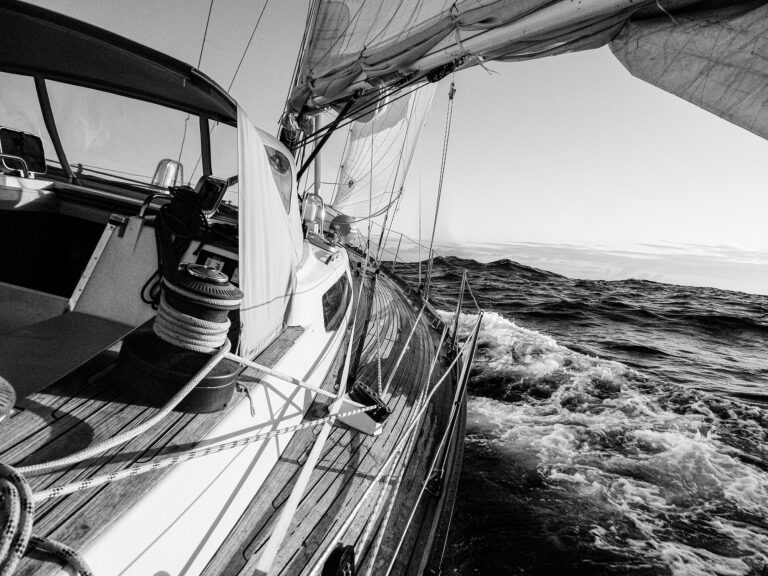
Have you ever dropped out the bottom of your car? As in, have you at one moment been pulling up outside your home and the next found yourself sitting on the road beneath? Albeit still in the driver’s seat and within the realms of the vehicle, but having fallen through the bottom nonetheless?
I have. Only the car was an inflatable dinghy, and home a small sailboat anchored off the Grenadine island of Bequia.
Of course, in my scenario, I ended up in the water. Having stood up at the bow of our little tender to tie us on to Blue Eye — the Nicholson 32 my friend James and I had sailed over from England — the soft flooring came all too easily apart from the inflated tubes, and it was only an instinctive pirouette that prevented me from dropping right the way through in a Jack Sparrow-esque escape.
Fixing the pathetic pile of PVC that sat dejected on Blue Eye’s foredeck, we decided, was beyond us.
There is never a good time to fall through the bottom of your dinghy. Especially not for frugal sailors like ourselves who stubbornly anchor in all manner of wind and swell to avoid marina fees, and thus the purchasing of a dinghy — which is astoundingly expensive when new, and painfully rare to find secondhand — became an unwelcome priority during our Caribbean cruising.
Fixing the pathetic pile of PVC that sat dejected on Blue Eye‘s foredeck, we decided, was beyond us. In fact, it was “fixing it” that had led to this situation in the first place, as we had ourselves ripped off the entire floor in order to reglue the PVC together, thus putting a stop to what was at the time only a modest water intake. It so happened that the morning ride ashore to clear customs and immigration in Bequia was the first run out for our newly “repaired” tender, and as we know now, also its last. Another $90 for some pricey PVC adhesive and a day of toil and sweat was not in the least appealing, especially when the likeliest outcome would be more wet-footed pirouetting the next time I stood up at the bow. The heat and humidity of the Caribbean, by the way, had been convenient scapegoats for our lack of success.

Arriving in Union Island, we heard rumors that a man called Lambie had a secondhand dinghy for sale. Lambie, it transpired, was a very large West Indian with an ability to simultaneously shovel an entire flock of deep-fried chickens into his mouth, all the while scolding potential customers for trying to negotiate a price.
The dinghy — incidentally, in far from good shape itself — had allegedly been shipped down from Miami, and customs had charged him a fee of such immensity that violins could be heard playing in the background. Given this, his asking price of 1,800 Eastern Caribbean dollars (about $650) was very reasonable, so he insisted, as bits of chicken sprayed everywhere.
But Union is just a stone’s throw away from the postcard-perfect Tobago Cays, where many a dinghy has been known to go “missing” overnight. Harboring doubts about his narrative, and uninterested in an inflated price for a barely inflated dinghy that was unlikely to have ever seen the likes of Miami, we continued on. Admittedly, though, none of this was expressed out loud for fear of meeting the same grisly fate as the chickens on his plate.

Still dinghyless, at times we had to resort to hailing water taxis if they were available, and on one occasion, I swam over to a neighboring yacht to ask for a ride ashore, if he happened to be heading in and wouldn’t mind. The man was German and therefore naked, but the conversation breezed over this, and later he kindly came by to pick us up. Clothed, thankfully.
On one particular day, in the absence of both water taxis and naked Germans, we set about launching the dinghy into the water without any flooring at all. It was just two tubes, with James on one side and myself on the other, clad in only swim shorts and dangling our legs into the turquoise water below. Even with our hefty Seagull outboard engine weighing down on the stern, it worked flawlessly (pun intended).
Chuffed with our resourcefulness, we headed over to a neighboring sailboat that was flying a British ensign and the Cornish flag: the same corner of the world from which Blue Eye hails.
Aboard we found a friendly Englishman named Jon who was so excited by our travels — having coincidentally almost bought Blue Eye himself some years before — that by the time it came to say our goodbyes, our ad hoc tender setup had remained largely unnoticed, much to our disappointment. Then, right on cue, Jon’s wife appeared from the cabin below and, in a voice far more posh and shrill than I imagine she hoped for, exclaimed, “Why, Jonathan, it’s got no bottom!”
We laughed all the wet way home, but decided against venturing off in a bottomless dinghy again. Not only would it entail wearing swimming shorts everywhere we went, but the drag created by the transom was a sure way to go through a tank of fuel a day.
Some weeks later, we finally found ourselves a new inflatable, taking a punt on a dinky little thing made in China and going cheap in Aruba. If ripping apart our first tender had been a source of grief, watching our second one submit to the scorching sun in a matter of a fortnight really is a tender subject. Lesson to be learned? The age-old adage: Buy cheap, buy twice.
Tom Dymond is currently cruising the South Pacific aboard Blue Eye.








